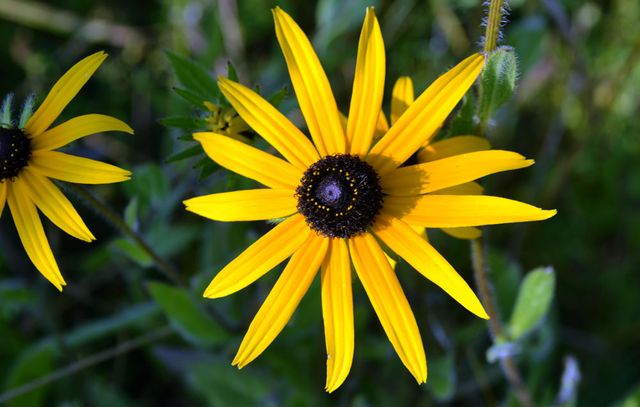Coneflower, black-eyed Susan, and several other summer-blooming annuals and perennials are all part of the Rudbeckia flower family. Rudbeckia flowers need a sunny spot with average to rich, well-drained soil. Sow annuals indoors in spring to set out after frost. Plant perennials in spring or fall. Divide every 3 to 4 years; deadhead to avoid self-seeding unless you want them to spread in a meadow or prairie garden. Mildew can be an issue on the foliage, so avoid overhead watering and don’t crowd the plants.
Summer-blooming annual Rudbeckia hirta, black-eyed Susan, bears single yellow, dark-centered daisies on 3-foot stems. The beloved cottage and cutting garden staples, Gloriosa daisies, with their marvelous blends of gold, orange, reddish, and mahogany petals on daisies up to 6 inches across, are a strain of this species; like black-eyed Susans, they bloom the first year from seed and are usually treated as annuals, though they may live a second or even third year if left in place.
Perennial R. fulgida, orange coneflower, bears 3- to 4-inch single, dark-centered gold daisies on 1½- to 3-foot plants in late summer and autumn. R. fulgida var. sullivantii ‘Goldsturm’ is a widely grown, very floriferous cultivar, often grown from seed. Zones 3–9. Mass in borders with other summer bloomers, in informal plantings, and cutting gardens. Coneflowers are naturals for the meadow or prairie garden, where their showy blooms add welcome color. Leave them standing in the meadow or prairie until spring—birds (including goldfinches) love the seeds, and the cones will remain showy through winter.













